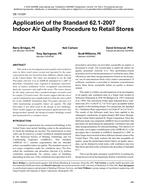As part of an effort to monitor electricity usage by plug loads in a new high performance office building, plug load management devices were deployed to enable data collection, analysis, and active control of plug loads. We used a Commercial Off-The-Shelf (COTS) plug load management system to capture relevant data for two different types of multi-function devices (MFDs) in the facility, one of which was tested for use with different power settings. This enabled a quantitative analysis to assess impacts on energy consumption. It was found that a projected 65% reduction in annual energy consumption would result by using a newer, Energy Star compliant model of MFD, and an additional projected 39% reduction in annual energy consumption would result by subsequently changing the time-to-sleep for that MFD. It was also found that it may be beneficial to apply automated analysis with anomaly detection algorithms to detect problems with MFD performance, such as a failure to go to sleep mode or variations in sleep power draw. Furthermore, we observed that energy savings realized by using plug load management devices to de-energize (unplug) MFDs during non-business hours depends on the sleep power draw and time-to-sleep setting. For the MFDs in this study with settings established per the maintenance contract (which were different than factory default values), turning the device off at night and then on in the morning used more energy than leaving it on in sleep mode due to the start-up behavior and excessive time-to-sleep setting of four hours. From this and other assessments, we offer these recommendations to building occupants: reduce MFD time-to-sleep, encourage employees to use the power save button, and apply automated analysis to detect problems with device performance.
Citation: ASHRAE Papers CD: 2014 ASHRAE Winter Conference, New York, NY
Product Details
- Published:
- 2014
- Number of Pages:
- 8
- File Size:
- 1 file , 1.3 MB
- Product Code(s):
- D-NY-14-C038


